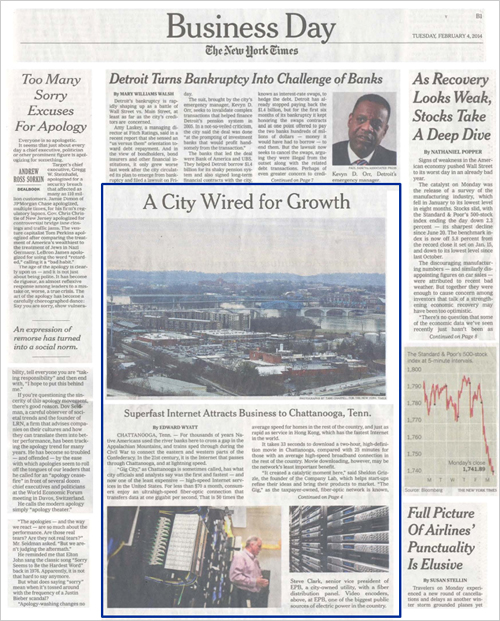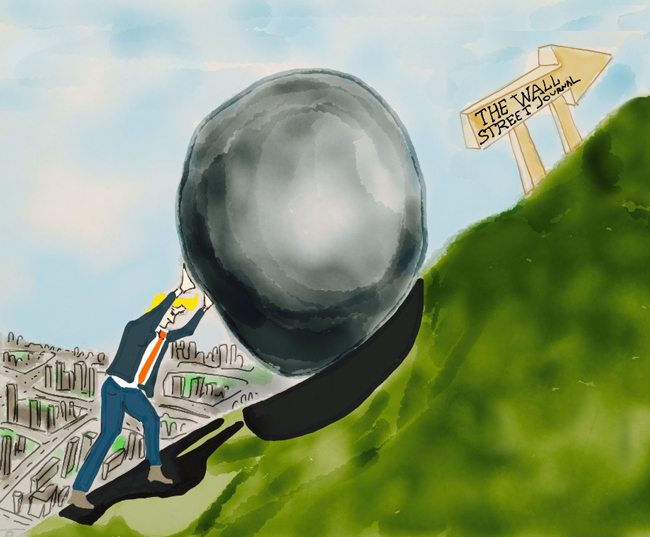If you’re like me, you picked up last Tuesday’s New York Times and thought WTH? (OK, maybe it wasn’t “what the heck,” but you get the drift.)
How did feel-good storytelling on the City of Chattanooga end up above the fold in The New York Times?

I’m sure officials from numerous cities who have invested zillions of dollars in Internet infrastructure read the headline, “A City Wired for Growth” and immediately wondered why the NYT didn’t choose them. It’s not every day that you see a city of roughly 172,000 people lauded by The New York Times for business practices.
I’m guessing that Chattanooga’s version of an economic development team pitched the story. It’s also possible that the journalist, Edward Wyatt, who’s based in Washington, D.C., and covers Internet policy, overhead some FCC suits lamenting the fact that other cities haven’t followed in Chattanooga’s boots and proactively pursued the angle.
Regardless, reverse-engineering the storytelling reveals all the assets you would expect in a NYT feature:
- Great nickname: “Gig City” is right up there with “Snoop Dog and “Dr. J”
- Contrarian dimension: Advanced technologies conjure images of Austin, Silicon Valley and Seattle, not a place with a view of the Appalachian Mountains
- Contrast Vignette A: 33 seconds to download a two-hour high-def movie in Gig City versus 25 minutes for the average city
- Contrast Vignette B: Named America’s most-polluted city in 1969 versus clean air, new waterfront and downright artsy
- Contrast Vignette C: When Internet service at 100 megs per second is available, on average only 0.12 percent subscribe versus 33 percent of Chattanooga households and businesses subscribe to such a service
- Quantifying the How: Federal grant of $111 million allowed the city to accelerate construction of a planned fiber-topic network
- Game-changing example: Quickcue moved here in 2011, snagged $3M in investment and sold for a bundle to OpenTable
- Requisite failure: Chattanooga dumped millions into a citywide Wi-Fi network that isn’t used
- Quote that rhymes: “This is a small city that I had never heard of. It beat Seattle, New York, San Francisco in building the Gig. People here are thinking big.” ~ Toni Gemayel who moved his startup from Tampa
That’s how the City of Chattanooga pushed the big boys aside for a day and landed a chunk of real estate in the New York Times.





